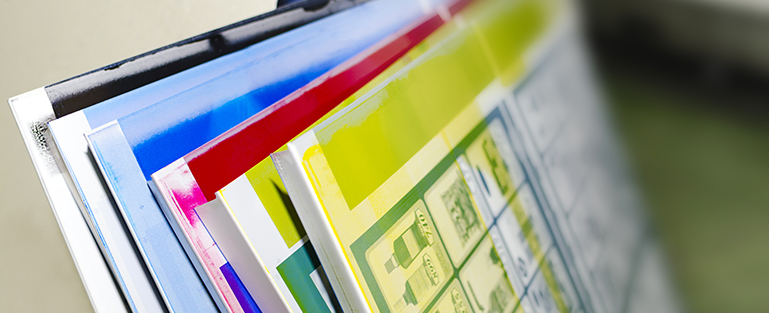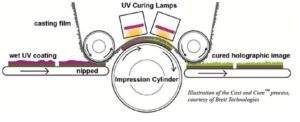
Blog

What Is Cold Foil ?
Cold Foil application is a system of printing metallic foil using a lithographic adhesive and is an extension to hot foil stamping. Cold foil has a very similar structure to hot foil in that it consists of 5 layers of material, however in this case the release coat reacts to sheer and not heat and the hot melt adhesive on the back of hot foil is replaced with a lacquer coat which has an affinity for cold foil adhesive. Cold foil adhesives are available as conventional or UV formulations. Cold foil adhesive has more in common with ink than glue in its constitution and applied to the substrate in the same manner as ink through the normal ink train and standard lithographic printing plate with an application amount of approximately 2 g/m2. The adhesive can, in general, be treated like ink and used neat into the ink ducts, reducers may be used if necessary and wash up is the same as ink. In use, the dampening system is reduced from normal printing and attention has to be paid to the wetting agents used as some of these can cause scumming or beading of the adhesive. The pH value and the hardness of the water need to be monitored.
Two towers of a lithographic press are used. On the first the adhesive is printed onto the substrate with a standard lithographic plate in the pattern desired. The adhesive cannot be used on uncoated stock as the absorption rate is too high. On the second tower the cold foil is passed between the blanket cylinder and the impression cylinder and runs at the speed of the press. The exit angle of the foil to the sheet is critical. As the sheet arrives at the second tower so the foil adheres to the adhesive in the printed pattern and is transferred to the sheet, the remaining foil stays on the polyester and is rewound or disposed of, depending on the operational system. The foil is overprinted in the remaining units of the press to produce the desired finished effect. With cold foil the color now comes from the process and not the material and so predominantly silver foil is used.

Cold foil is laid onto the substrate as opposed to stamped in as with hot stamping, the resultant product having the surface of the particular substrate; however with correct processing, as outlined above, cold foil can achieve the brilliance of hot foil on all types of substrate. An added advantage is that if a textured substrate is used, the resultant foil surface with be equally textured giving a brand new effect not possible with hot stamping. This process also looks almost the same as the very old process of “Bronzing”, also not possible with hot stamping. Half tone printing of the foil is also possible together with small font laydown and from large to small reverse outs. It is also possible to foil very large solid areas at press speeds. Reverse outs of the foil are particularly useful in replacing foiled boards as it eliminates the need to print opaque white, thereby allowing a reduced process while giving much better colors, particularly of skin tones. Cold foiled sheets are also completely recyclable and lower in cost.